
Review on Optimized Search: Kent Marine MicroVert by Ashley Karch

Liquid Food for Invertebrates
Let me start with a revelation. Your humble reviewer does not use this product for its intended purpose. Please don't panic. I don't add it to my vanilla ice cream. By off-label use I mean I use it to feed my freshwater mussels. Kent Marine Microvert is a liquid feed for marine invertebrates. However, I have learned that this product is suitable for freshwater shellfish and mussels. I started breeding freshwater mussels in 2015. I've lost a lot of shellfish over the years. It's a way of saying "killed accidentally due to ignorance". Little is known about keeping freshwater shellfish in an aquarium. I had to learn my lessons through suffering and grief. I know they're just molluscs, but a person can bond with these little invertebrates. I just hope all those dead shells are enjoying life in shell heaven. So the Kent Marine Microvert will work. But my number one choice for freshwater shellfish is Seachem Phytoplankton. Phytoplankton is a microalgae. Favorite cuisine of freshwater mussels and shellfish. The Kent product contains more ingredients and contains more protein. I would use Microvert as a supplement. Feed three to four times a week. Seachem should be used every day. Remember this is for freshwater shellfish. The recommended feeding schedule and dosage have been calculated for feeding marine corals and molluscs. Sea corals and molluscs obtain most of their nutrition through photosynthesis. They can survive without additional food. Freshwater mussels and mussels are different. Freshwater invertebrates do not derive energy from photosynthesis. They have to feed themselves by filtering algae and microorganisms from the water. The sea shell feeding schedule is not suitable for freshwater. You need to increase the dosage and feed more often. But wait, there's one more thing to make sure your clams are getting enough food. The mussels begin to eat shortly after the light in the aquarium is switched on. Wait for the mussels to start filtering. You will see their siphon tubes sticking out of the sand. Set the filter to the lowest level or turn it off completely. Shellfish cannot compete with a filter in food. You don't want your filter to remove food from the water before the mussels have had a chance to feed. And they eat slowly. Do not dose the feed directly onto the shellfish. Pour the liquid food over the water and allow it to settle on the mussels. What we do with a normally planted tank may not work for freshwater shellfish. Remember, they eat floating algae. They are also very sensitive to copper. Even a small amount of copper can kill them. Guess what? Most plant fertilizers and fish food contain traces of copper. Shellfish are more sensitive to copper than Neocaridina shrimp. The only plant fertilizer I use is a product called "Easy Green" from Aquarium Co-Op. Safe for shrimp. Dose half the recommended amount. Another thing you shouldn't do is use liquid charcoal like Seachem Fluorish Excel or API C02 Boost. These foods kill floating algae. For this reason, many people who love planted aquariums use them. But you have to see the problem. The last thing you need in a shellfish tank is killing floating algae. Algae are their food. The chemicals also harm the shellfish. That's what I do. I wait for the clams to start filtering. Then I reduce the water flow from the Seachem Tidal 35 filter to a thin stream. Sometimes I turn the filter off completely. I take a full capful of Kent Marine Microvert and drip it onto the surface of the water. The product spreads slowly. Wait two hours and see if they keep eating. If so, throw in another cap. Let them eat for at least two more hours before turning the filter back on. My tank is 20 liters. I have six mussels in my aquarium. You have to feed a lot, otherwise the mussels will die. In a typical aquarium, there are not enough floating green algae. The filter system removes most of it. This means the clams depend on you to feed them. Don't worry about the water pollution. In a well established tank this will not happen. Of course, wait until your aquarium is mature before adding anything as delicate as clams. My tank is set moderately. I've never had an ammonia spike. I have a Seachem Ammonia Alert in this aquarium. I removed the sponge from the Seachem Tidal 35 Power Filter. I only use Matrix Biocarrier. The matrix is in the filter bag in which it was supplied. I flush it with every water change. This allows most algae to pass through the filter. The filter is primarily designed to circulate water. In summary, this product is suitable for fresh water. Seachem phyoplankton should be the primary food for shellfish. This product, Kent Marine Microvert, can be an additional power supply. In my experience, this is the easiest food for freshwater inverts. Stay away from live food. Many coral foods are bottled alive. This means that the organisms in the bottle are still alive. and weighed in salt water, it doesn't work in fresh water. These tiny organisms die as soon as they enter fresh water. Keeping shellfish alive can be a challenge. Please investigate. Do not put fish medicines in the aquarium. Most will kill the shellfish. Stay away from plant fertilizers containing copper. Feed liquid invertebrate food daily. Some hobbyists have been lucky enough to keep live clams in large plastic containers outdoors. Sunlight encourages the growth of green algae, which clams love. You can try this approach, but be sure to take a light bath so the water doesn't get hot. Shellfish need a lot of oxygen and warm water contains less of it. Keep the water cool. Don't use those black plastic tubs. They absorb too much heat.
- Fast Change
- Almost Never
New products
Comments (0)
Top products in 🌊 Aquarium Water Treatments
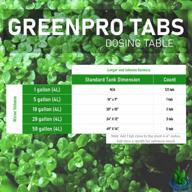
12 Count Greenpro Root Tabs Fertilizer Tablets: Ideal For Aquariums, Ponds & Water Gardens!

26 Review
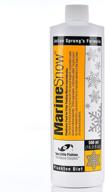
🐟 Two Little Fishies Marine Snow ATLMSPD4, 16.9 oz

10 Review
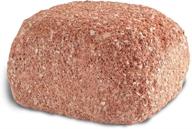
EcoBio-Block Stone: Natural Water Clarifier & Odor Remover for Aquariums (Medium) - Treats 15-40 Gallons Efficiently

10 Review
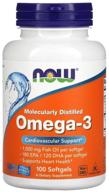
Omega-3 caps, 1000 mg, 100 pcs, 1 pack, neutral

34 Review
Another interesting products
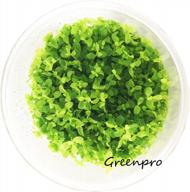
Greenpro Micranthemum Monte Carlo: Live Large Pearl Grass Aquatic Plant In Tissue Culture Cup For Freshwater Fish Tanks And Aquariums

49 Review
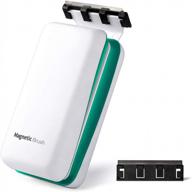
Efficient 2-In-1 Magnetic Fish Tank Cleaner With Non-Slip Design And Scratch-Free Blades

37 Review
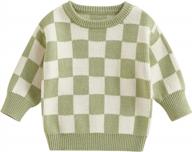
Jasonwell Magnetic Aquarium Fish Tank Glass Algae Cleaner - Floating Brush (L Size)

37 Review
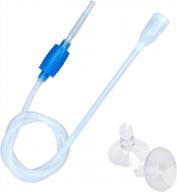
🐠 U-BCOO Aquarium Gravel Cleaner Fish Tank: Manual Siphon for Efficient Filter Gravel Cleaning and Water Change in Tanks

22 Review

